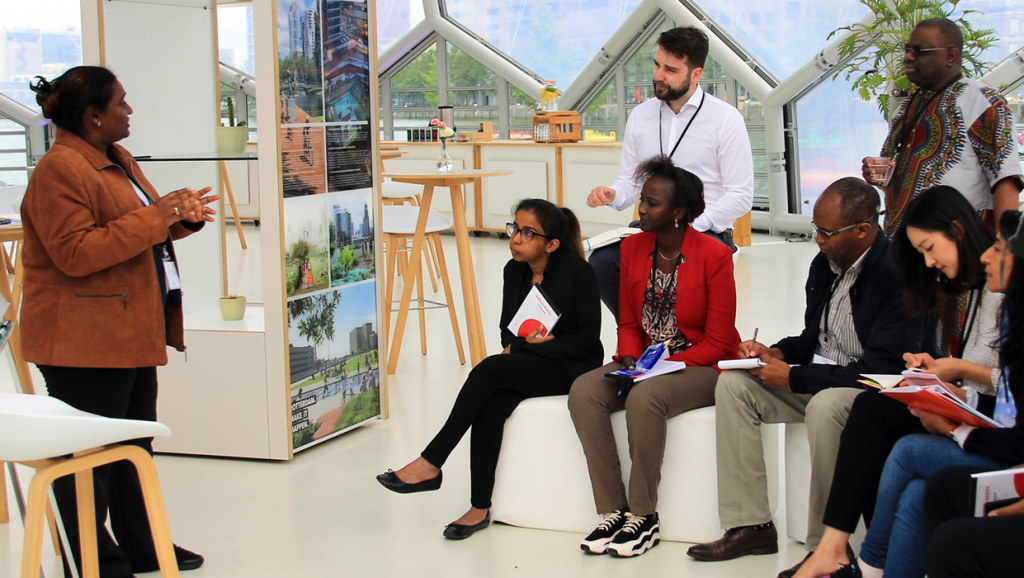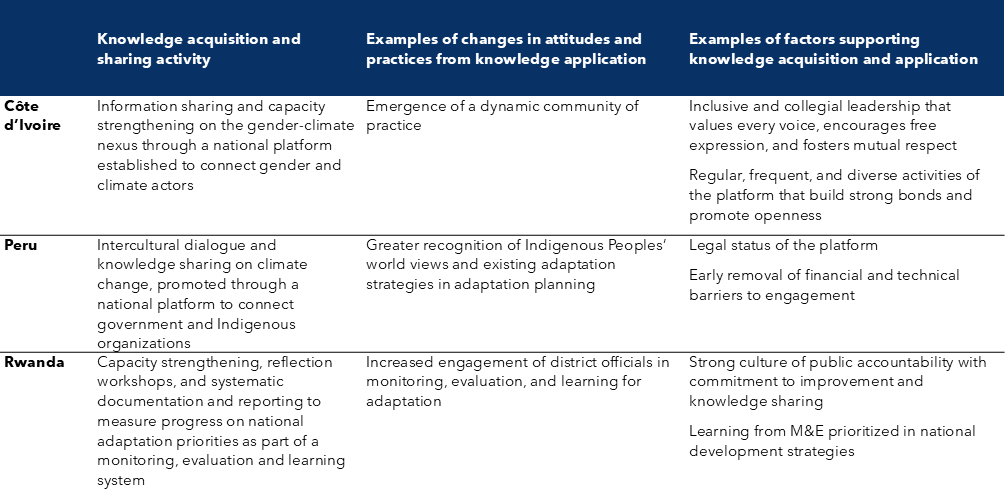
Adapting to the impacts of climate change demands significant shifts in attitudes, behaviours, and practices, both among those directly affected and among policy and decision-makers.
For instance, farmers may need to transition away from cultivating crops that are highly sensitive to climate hazards. At the same time, policy-makers must systematically integrate climate change adaptation considerations into all investment decisions and enhance collaboration across sectors and governance levels to develop comprehensive solutions.
Learning plays a crucial role in driving these changes by enabling the acquisition and dissemination of new knowledge that informs and improves practices. For example, through activities such as monitoring and evaluation (M&E), decision-makers can gain valuable insights into why certain adaptation interventions have—or have not—achieved intended outcomes. Similarly, countries can identify more effective strategies for mobilizing financial resources for the implementation of their adaptation priorities through targeted research and training.
Recognizing the central role of learning in advancing adaptation, in 2024, the National Adaptation Plan (NAP) Global Network conducted an initial analysis to assess how governments have embedded learning into their NAP processes. The analysis revealed that references to learning in NAP documents are limited to broad, high-level statements. Concrete evidence detailing who learned, from whom, where, how, and with what results remains sporadic and inadequately documented.
It turns out that we know very little about how to operationalize sustained learning within climate adaptation policy processes. We tend to oversimplify or overlook how learning happens, often assuming it will automatically emerge from activities like M&E, dialogues, research, training, or education.
Three Ways Governments Can Drive Effective Learning in NAPs
Given the urgency of addressing the impacts of climate change amid limited financial resources for adaptation, understanding how to promote learning more effectively is essential. There is much to learn from countries that have found success in this area.
In the new report From Knowledge to Action: Exploratory Examples of Integrating Learning into National Adaptation Plans, we demonstrate through good practice country examples that the key to unlocking the full potential of NAP processes lies in what is often considered secondary: governments committing to collective and deliberate learning.
Collective learning refers to the process by which multiple actors and institutions involved in the NAP process create shared knowledge that informs broader, more systemic adaptation efforts.
Deliberate learning is learning actively promoted through intentional planning, coordination, and follow-up, embedded within institutions, laws, policies, and programs. It is about institutionalizing learning on adaptation through mandated and funded activities.
In our report, we identify three broad ways governments can drive collective and deliberate learning within the NAP process:
- undertaking activities such as information sharing and capacity strengthening through platforms, partnerships, or dialogues designed for diverse actors and institutions to acquire new knowledge;
- tracking changes in attitudes, policy positions, behaviours, and practices resulting from knowledge acquisition and sharing;
- creating conditions that enable diverse actors and institutions to continuously acquire and apply new knowledge on adaptation.
These three elements are interconnected and mutually reinforcing; all must be pursued together to foster effective learning. Our report documents how governments put this into practice in Côte d’Ivoire, Peru, and Rwanda.
Good Practice Examples From Côte d’Ivoire, Peru, and Rwanda
Table 1 provides examples of results across the case studies in Côte d’Ivoire, Peru, and Rwanda.
Table 1. Case study results overview (Click image to view full image file)
The examples show that the changes resulting from activities bringing diverse actors together to acquire and share new knowledge on adaptation are far from trivial. When key considerations such as gender equality, Indigenous worldviews, and M&E are integrated into adaptation planning, their visibility increases, making them more likely to be recognized, funded, and addressed in subsequent implementation phases. These changes can significantly boost the effectiveness of climate adaptation efforts, reminding us why investing in learning within NAP processes is so valuable.
Recommendations
Governments and other actors should leverage existing mechanisms—such as platforms, partnerships, and events—and explore how to use them more intentionally for collective learning on adaptation. Our case studies highlight that collective and deliberate learning requires time and sustained effort. Simply bringing diverse actors together is important, but not sufficient.
Effective learning demands sensitive facilitation, conflict resolution skills, and trust among participants. In Côte d’Ivoire, strong leadership has made a crucial difference. In Peru, formalizing the platform was important because it signalled commitment. However, formalization alone cannot sustain learning. In Rwanda, the government leveraged the fact that learning from M&E is already prioritized in national development strategies.
Sustaining effective learning—across political cycles and throughout the iterative phases of the NAP process—remains a major challenge in all the countries we examined. Continuous investment in learning is therefore essential for effective adaptation. Further research is needed to understand when and how learning should be prioritized, especially given limited resources.
Read the full report here.
